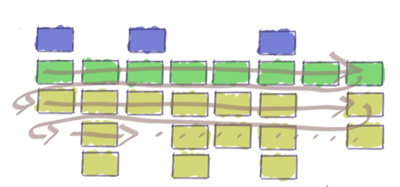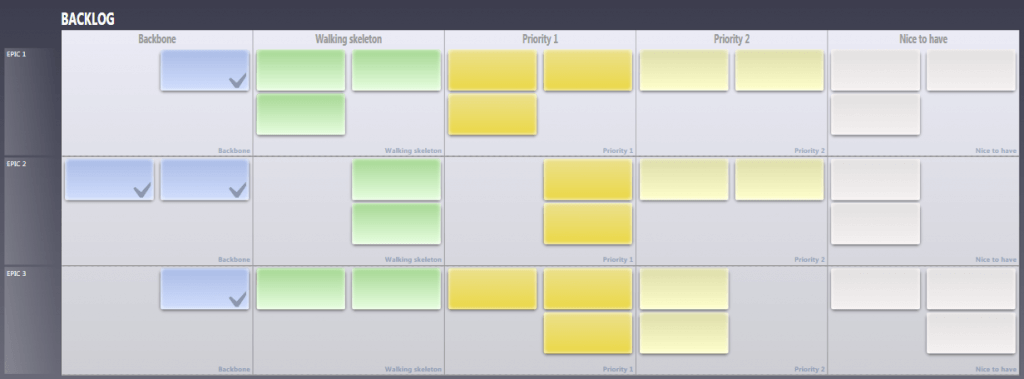 At Eylean, we are always looking for different approaches to well-known things and when we find something interesting, we cannot wait to share it with you. Recently we came across an article describing an interesting take on managing a team’s backlog. Therefore this week we present – the story map backlog.
At Eylean, we are always looking for different approaches to well-known things and when we find something interesting, we cannot wait to share it with you. Recently we came across an article describing an interesting take on managing a team’s backlog. Therefore this week we present – the story map backlog.
A well-managed backlog is important for any agile project – it allows the team to focus and complete the work at hand in the best way. While most of the teams adapt and use the traditional approach without any doubt, some however question it and look for new and improved solutions. This is where the story map backlog comes in, providing more scope and details for the project at hand.
The idea behind the story map backlog is a simple one – instead of only holding standalone tasks, it provides context for them as well. This is achieved by completely changing the way the backlog looks and arranging it by the epics of the whole project instead. Each epic becomes a separate column in the backlog, representing a key feature for the final product and the team goes through each of them to produce the final version. However, instead of the traditional approach, they do not achieve that one epic at a time. Instead they work a little on each epic at a time, rotating them continuously. This is done by prioritizing and separating the user stories attached to them.
The team identifies user stories for each of the epics, then these stories are prioritized based on their importance to the final product. The absolute key feature stories are placed in the first row under each epic – they are the backbone of the system or the frame, upon which it is going to stand. The user stories, that fulfill the absolute minimum client requirement for a complete product come next and are placed in the second row – the walking skeleton. After completing these stories the team should be able to present the first working version of the final product. The rest of the user stories such as specifications are then placed in the following rows, based on their importance to the client. The last row within such backlog is usually entitled “Nice to have”, containing user stories that are of a least necessity.
With a story map backlog each feature of the product is improved upon little at a time, meaning that the team can continuously update the client with a complete improved product and explain the progress. It is easy to understand the full scope of the project, as well as to keep track of where the team is at any time. For the team, this type of a backlog also means easier communication and prioritization of user stories as a whole. It creates better communication between the client and the team, letting the client contribute more to the process.
So how does one implement this technique? Probably the most straightforward approach is doing it manually – arranging the backlog on a big board or a table. However, it can be easily done with project management software such as Eylean as well. In fact, it took us only a few minutes to create a story map backlog template just for you!
Contrary to the previous example, we felt it would make more sense when using Eylean for the user stories to be arranged in a horizontal way instead of a vertical one. Therefore as you can see, separate rows, are dedicated to separate epics, meaning the team would go down completing user stories one column at a time. You may wonder, which epics should be placed first and which later. Here it is recommended to think of the absolutely simplest way of describing how you will make the final product. The order you put the epics in there, is the order for your backlog as well.
With the axis switched up, the columns would now become the measure of priority, the first column being the backbone, second – the walking skeleton and so forth. For this example we have also added in Priority 1 and Priority 2 columns, to give an example of a larger project, containing more user stories of various importance. What is very nice with this approach is that at any time time you can go down any specific row in the backlog and see the complete evolution of that feature, also evaluate how far your team has come and the ways they still have to go.
The story map approach is a whole new way of looking at the backlog. Instead of putting all the user stories in one place without any reference, it keeps them organized in a way that provides both context and project scope. This is great for explaining the progress and the overall goal of the project, planning releases and more. However, one should keep in mind, that this would be a considerable change to any team and only go forth is that is what the team wants. When fully embraced, this approach has proved to bring in a lot of benefits and may be the thing your team did not know it was looking for.






